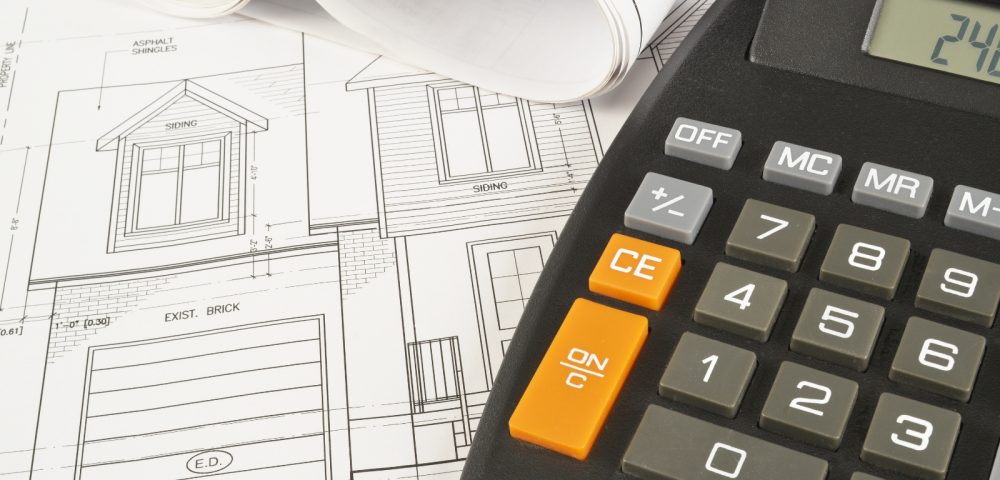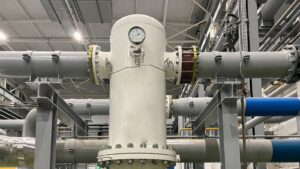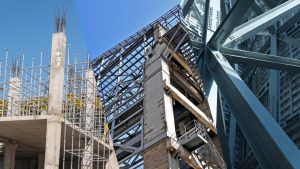Construction estimating is what decides the fate of every project. It is certainly scary because budgets, timelines, and profits hang on its accuracy. It was problematic as traditional methods left project teams bogged down in paperwork, prone to human error, and frustrated by subjective guesses. What if there were a smarter way to nail those numbers? This is where the arrival of artificial intelligence into construction estimation occurred. It is now quietly reshaping how builders predict costs and plan resources, turning guesswork into confidence.
This article covers everything about AI’s implementation in construction estimation.
We will explore
- The Role of Estimating in Construction Projects
- Key Challenges of Traditional Estimating Methods
- Key Ways AI is Used in Construction Estimating
- Benefits of Using AI in Construction Estimating
- The Future of AI in Construction Estimating
- Making the Path for Error-Free Construction Estimating with AI-Driven Tools
The Role of Estimating in Construction Projects

- Estimating in construction means calculating the expected costs, timelines, and resources needed to complete a project before the work begins.
- This is when the estimators figure out how much money materials, labour, and equipment will require while also planning realistic schedules and manpower.
- Accurate estimating helps companies set budgets, prepare competitive bids, and make smart decisions about which projects to take on.
- When estimates miss the mark, projects can suffer delays, unexpected expenses, or even financial losses.
Key Challenges of Traditional Estimating Methods

Estimators rely on historical data and expert judgement, which limits their ability to adapt to unique designs or unexpected project demands.
Traditional methods are prone to human error, personal bias, and inconsistencies that can throw estimates off track.
Estimating struggles to scale when projects grow more complex or when fast-changing market conditions demand quicker and smarter adjustments.
Accounting teams spend a lot of time and energy on manual calculations, which makes the process slow, resource-heavy, and sometimes frustrating when deadlines loom.
Key Ways AI is Used in Construction Estimating

Automating Quantity Takeoffs
When estimators need to figure out how much material a project will require, they usually spend hours with blueprints and BIM models, counting every detail. AI completely changes this routine.
Instead of flipping through pages and measuring manually, AI scans plans, drawings, and even complex 3D BIM models instantly. It reads digital files the way humans read text, but much faster, identifying walls, floors, beams, and other components with accuracy.
Then it calculates the material quantities you need in a neat report. This method not only saves time but also ensures consistency because it eliminates those little counting mistakes people tend to make under pressure. And it keeps everything aligned because you do not have to recheck numbers over and over.
Predictive Cost Modelling
AI simply thinks ahead of present numbers using past patterns to predict what things might cost tomorrow. Instead of sticking with static spreadsheets, estimators feed historical project data into AI systems that learn how costs change over time.
These tools understand how different materials behave in the market, how labour rates rise and fall, and even how project types impact expenses. What makes this exciting is how AI adapts in real time.
For example, if steel prices jump next month or if labour shortages hit your area, the AI adjusts predictions accordingly instead of waiting for someone to notice. That flexibility matters because construction costs rarely sit still.
Contractors who use predictive cost modelling see clearer budgets and fewer surprises later on.
Enhancing Bid Accuracy
Writing bids takes skill because contractors need to stay competitive without cutting into their margins.
Instead of guessing what competitors might bid or worrying about hidden costs, AI analyses previous bids and identifies market trends. It examines your past projects, the local competition, and current demand to recommend a price that feels competitive yet realistic.
Estimators can use these insights to fine-tune their proposals so they do not undercut themselves or scare clients away with inflated numbers. Also, AI picks up on patterns in competitors’ bidding behaviour, giving contractors an edge when planning their strategy.
This insight saves valuable time and gives estimators more confidence to submit bids that stand out while staying profitable.
Risk Analysis and Mitigation
Every project carries risks varying from bad weather, supply chain delays, labour shortages, etc. Underestimating them can derail the best plans.
AI shines here by digging into mountains of data to find hidden risks before they show up. It scans schedules, supplier records, weather patterns, and even market signals to flag issues that might disrupt the budget or timeline.
Estimators can use this foresight to build smart contingencies into their estimates, like setting aside extra funds or adjusting timelines upfront. Instead of scrambling to fix problems after they happen, teams prepare for them early.
Real-Time Data Integration
Construction projects generate endless streams of information, and keeping estimates updated as new data flows in is nearly impossible.
AI steps in as a connector that keeps everything synchronised as it links to project management software, supplier databases, and even live market feeds to adjust estimates on the go. When material costs change, schedules shift, or resource availability updates, AI reflects those changes instantly so you always see the most current picture. This integration saves teams from having to stop and recalculate every time something changes.
It also keeps communication smoother because everyone works from the same updated numbers.
Estimators no longer run up and down through separate spreadsheets or worry about outdated figures. Instead, they make decisions based on real, live information that evolves with the project. This ability to react quickly without losing track helps projects stay aligned with both budgets and timelines.
Benefits of Using AI in Construction Estimating

Improved Accuracy and Reliability
AI checks patterns and details with sharp precision, which helps estimators avoid mistakes and guesswork. It delivers consistent, trustworthy numbers that teams can count on, even when projects feel rushed or highly complicated.
Faster Turnaround Time for Estimates
AI carries the capacity to speed up the entire process by quickly scanning plans, crunching numbers, and presenting results. Estimators save hours of tedious work, letting them respond to clients faster and focus energy where it truly counts.
Better Resource Allocation and Planning
The latter shows exactly how to spread out materials, labour, and time to avoid waste or shortage. Project teams can plan smarter schedules and budgets because they see where to direct resources without overloading or leaving gaps.
Enhanced Competitiveness in Bids
This robust technology gives estimators deeper insights into market conditions and competitor patterns, so they craft bids that stand out. This balance between staying profitable and appealing to clients helps them win more work confidently.
Greater Scalability for Large or Complex Projects
AI handles huge amounts of data effortlessly, making it perfect when projects grow in size or complexity. Teams can stay organised and accurate even when tasks multiply and deadlines tighten, which keeps everything under control.
The Future of AI in Construction Estimating

The future of AI in construction estimating looks exciting as it connects with advanced technologies like BIM, IoT, and digital twins to create smarter, more connected workflows.
Estimators will watch AI tools grow into almost fully autonomous systems that handle calculations, risk assessments, and even bid suggestions without constant human input. As AI takes over routine tasks, estimators will shift their focus toward higher-level strategies, making decisions that shape projects instead of just crunching numbers.
This evolution will let them guide projects with sharper insights while AI handles the heavy lifting.
With technology advancing fast, estimators can expect their roles to feel more creative and impactful.
Making the Path for Error-Free Construction Estimating with AI-Driven Tools

Every number counts in construction, and AI helps you get them right the first time. But no tool works alone, and it shines brightest when guided by human expertise. Our industrial asset management platforms combine your judgement with AI precision to deliver unbeatable cost estimation. Why stick to old methods when the smarter way is just one click away? Explore it now and own your edge.







